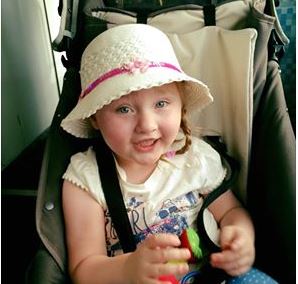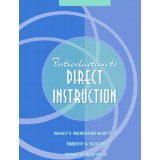 In honor of the United Nations World Autism Day, the Kindle version of the book Chaos to Calm: Discovering Solutions to the Everyday Problems of Living with Autism is FREE in the Amazon Kindle store from April 3-6, 2016.
In honor of the United Nations World Autism Day, the Kindle version of the book Chaos to Calm: Discovering Solutions to the Everyday Problems of Living with Autism is FREE in the Amazon Kindle store from April 3-6, 2016.
Please tell an autism parent about this. Change a life!
Click Here to get your free copy.
If you are outside the US and you don’t have an Amazon.com account, you can get the book at your own country’s Amazon site. Search Google for Amazon + [name of your country].
If you get your free copy of the book, please help us out by writing a review on Amazon.
“This remarkable book is something that any ABA person would be proud to offer parents. TAGteach has an important future in the treatment of autism and other developmental delays and this parent has shown the way. I will be recommending the book to both parents and ABA therapists.”
Joseph Morrow, PhD, BCBA-D
President, Applied Behavior Consultants
Professor of Psychology and Behavior Analysis (Emeritus)
California State University, Sacramento
Licensed Psychologist, State of California
“I am on the Autism Spectrum. I’m both high and low functioning but have achieved a level of integration in neurotypical society because of my higher functioning attributes. It has been a difficult path to walk alone though. If TAGteach had been around when I was a child I am one hundred percent sure I would have a had an even more successful, less frustrating, anxiety ridden childhood and been a higher achiever than I currently am.”
Katie Scott-Dyer
“I completely enjoyed this book. It was an engaging and easy read with the appropriate amount of personal testimonial and practical generalization. I wish I could have read it years ago. Parents and practitioners alike will benefit from reading this book regardless if your child is high functioning or severe. After reading, you’ll know that all those other books you read on autism, sensory processing disorder, auditory processing disorder, apraxia, etc. were mostly a big waste of time and money. Don’t let your child’s doctor or other professional convince you that nothing can be done. It’s not true and this book proves it.”
Aimee Taylor – Autism Parent
Click here for more reviews from parents and professionals
About the Book
Chaos to Calm describes how Martha Gabler discovered that effective solutions really did exist for the overwhelming behavior problems of her own son with profoundly nonverbal, severe autism.
Here are some of the things Martha explains in this book:
- How to observe your child
- How to use positive reinforcement to shape simple behaviors
- How to notice even tiny moments of desirable behavior
- How to break behaviors into tiny pieces
- How to add simple behaviors together to build complex behaviors
- How to communicate to the child “Yes!” without using words
- How to organize the child’s environment to maximize success
- How to arrange the day’s activities for maximum success
- How to stop tantrums, aggressive, destructive and self-injurious behaviors
- How to teach the child to go to bed, stay there and sleep
- How to manage and teach without force, threats or coercion
When Doug turned five, Martha realized that she and her family were basically on their own. During the “dreadful early years,” Doug’s behavior worsened and worsened. The family floundered. Daily, if not hourly or even more often, there were screaming, tantrums, self-stimulatory “verbal stimming,” running off, and even violent, self-injurious and destructive actions. The Gablers were exhausted beyond description by lack of community understanding, by lack of help that they could afford, and perhaps worst of all, by night after night of severe sleep deprivation.
A chance reference in an email listserve lead Martha to TAGteach, a teaching system based on the structured delivery of positive reinforcement. TAGteach gave Martha the tools she needed to observe Doug’s behaviors, break them down into manageable pieces, and reinforce his previously-rare positive actions – in fact, positive actions that sometimes lasted only a few seconds in the beginning, but which gave Martha the precious key she needed to unlock major improvements. With a few basic rules and a commitment to practice them, Martha was able to apply step-by-step solutions to Doug’s disruptive behaviors. In TAGteach, Martha found a powerful supplement to other scientifically-based behavioral interventions, many of which required difficult-to-find behavioral experts whose costs would have taxed the family’s financial resources in the extreme
The result? A boy who was once wild and chaotic now has the skills that enable him to be a charming teenager who loves life and enjoys going places.
This book explains, step-by-step, how Martha taught Doug to vocalize appropriately, go on walks, wait in line, go to the grocery store, ride a bike and many more skills that are normally taken for granted, but for a child with autism, they do not come easily if at all. Perhaps the most important skill was how to lie quietly in bed and go to sleep, so the other exhausted members of the Gabler family could themselves get some badly-needed sleep. Martha uses simple language and engaging prose to explain how she achieved all this. The book is in turn heartbreaking, humorous and brutally honest.
Every autism family seeks the light in an ocean of despair. Every autism mom, every autism dad, in fact every person who loves another person with autism, can use TAGteach with ease. This book shows you how.
What is TAGteach?
TAGteach stands for Teaching with Acoustical Guidance. TAGteach is a teaching and communication method based on the scientific principles of Applied Behavior Analysis (ABA).
TAGteach enables extremely precise positive reinforcement of behavior by using an acoustical signal to “mark” the behavior – at the precise moment the child performs the behavior! The acoustical signal is a short, sharp sound made by a handheld device (the “tagger”). When the child performs the correct action, the parent/instructor immediately presses the button on the tagger and hands over a treat (candy, treat, token, praise, social recognition, or money) as a reinforcer.
With TAGteach, it is easy to reinforce behaviors precisely and quickly. The immediate, accurate feedback and positive reinforcement result in the child performing the correct action more often, and for longer periods of time. With immediate feedback and learning tasks broken down into small steps, children can learn many new skills with TAGteach — at their own pace.
TAGteach in Action
Watch this video that shows TAGteach in action in an autism school setting. This approach is unique in that it allows the child to “be the teacher”. The child gets to be the teacher before he takes his turn to try the new skill. This is fun, gives him control over his own learning and lets the teacher know for sure that he understands the skill before he tries it himself. One of the critical features of the TAGteach approach is that only one aspect of a skill is worked on at a time. There is no error correction by the teacher. If the child makes a mistake, it is up to him to self assess or try again. There is also no physical prompting, nagging, coercion, cheerleading or verbal coaching in TAGteach.
In this example the teacher gives two tag points, with five tags for each. The first tag point is “paper in lines” so that the child will know how to position the paper for printing. The second tag point is “hand on paper” so that he learns to hold the paper still with his other hand. Notice that even when the tag point changes to “hand on paper”, the child still remembers and tries to position the paper properly.
Connect with Us!
 Check out the TAGteach International website.
Check out the TAGteach International website.
Join the free TAGteach Yahoo Group.
See Martha’s book about TAGteach for Autism or ask a question (with no obligation).
Sign up for Martha’s mailing list to receive updates, new articles and free tips right in your inbox!
If you liked this post, please share it on social media. Thank you!







 Check out the TAGteach International
Check out the TAGteach International 

